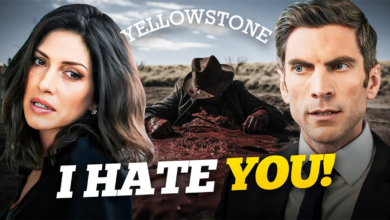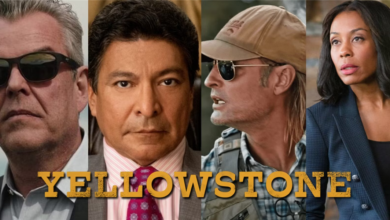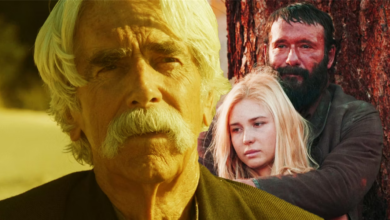The Hidden Meaning Behind ‘Yellowstone’s Cowboy Hats
'Yellowstone' throws this classic Western trope on its head.

- In traditional Westerns, the hero wears a light-colored hat while the villains wear dark hats, but the characters in Yellowstone challenge this trope.
- The characters in Yellowstone do not neatly fit into the categories of good or evil, with protagonists like Rip Wheeler and John Dutton wearing dark hats despite their complexity and hero status.
- The hat color in Yellowstone is symbolic of characters’ self-perception and moral ambiguity, with characters like Rip wearing a dark hat to reflect their struggle with their own darkness.
Have you ever noticed the different colored hats in old Westerns and the different characters who wear them? Perhaps you’ve noted the light vs. dark standard and how most of these tales follow it. Well, come Taylor Sheridan‘s hit Paramount series Yellowstone, this trope was flipped on its head by a plethora of characters who don’t neatly identify with good or evil. While Yellowstone wasn’t the first Western to ever flip the script on the way cowboy hats should look in a Western, it’s one of the most notable modern examples that is worth digging deeper into.
There are dozens of genre tropes that have been associated with the Western over the years, but maybe none are more iconic and stalwart than the concept of different colored hats. No, you’re not going to see cowboys running around with red, blue, or green on their heads, but you may have noticed the slight shifts in shades between darker colors and lighter ones over the years. These gradients aren’t crafted by accident, and that’s especially true on a show like Yellowstone.
The Western Trope of Light vs. Dark Hats Has a Long History
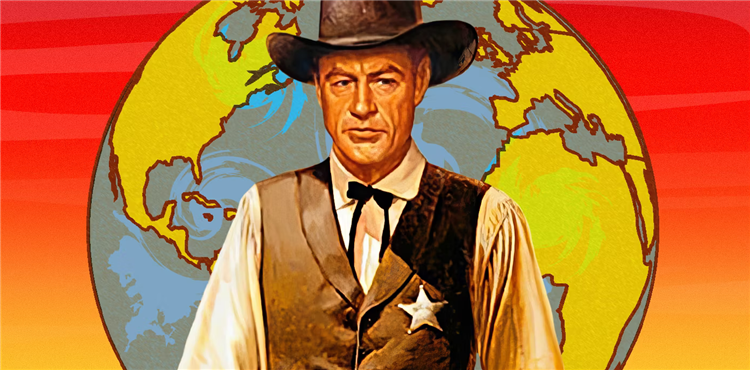
In many traditional Westerns, the lead hero rides into town with a light-colored hat and plays the part of savior for whichever undermined or persecuted group needs his aid. Yes, there’s actually a reason behind why the Lone Ranger wears that white hat. The 1953 film Shane is perhaps the most perfect example of this trope, acting as the “gold standard” for the classic Western. When Shane (Alan Ladd) arrives in town, he does exactly that, battling black-hatted villains to protect homesteaders in the Wyoming Territory. And Shane isn’t the only one. Except for characters like True Grit‘s Rooster Cogburn or Ethan Edwards from The Searchers, John Wayne‘s characters usually wore lighter-colored hats while riding into battle, often against those wearing darker shades on their heads.
In fact, this is where the traditional moniker for a Western villain, “black hat,” comes from. This name has been applied to various characters throughout film history, though one of the most bizarre comes from the 2011 action horror flick Priest, where Karl Urban‘s villainous character is known only as “Black Hat.” It’s true what they say, no genre can fully escape the Western, and as the genre continues to thrive today, there’s bound to be more nods to the cowboy hat symbolism in the near future. But while many, perhaps most, Westerns of the traditional era followed this concept to the tall “T,” not every iconic production at the time did.
One such example of a feature that flipped the Western script, in a variety of ways, is High Noon. This Western–which came out a year prior to Shane–had Gary Cooper‘s Marshal Kane, our Western hero, in a black hat while his adversaries wore lighter hats. High Noon was controversial at the time, and not just because of its contrarian use of cowboy hats, but that hasn’t stopped it from being considered one of the greatest Westerns of all time. Additionally, many Revisionist Western icons (such as Clint Eastwood) were known for wearing darker hats, and in Butch Cassidy and the Sundance Kid, Robert Redford‘s Kid brandished a dark hat while Paul Newman‘s Butch wore a lighter one. Though traditional Westerns may have followed this idea more closely, the genre soon switched things up.
‘Yellowstone’s Characters Don’t Rightfully Fit Either Category

Another Western story that has been considered exceptionally great by many, even if it feels like nothing more than a prestigious soap opera at times, is Yellowstone. For four and a half seasons now (we’re still waiting on the back half of Season 5), Yellowstone has thrilled audiences everywhere with the complexity of the Duttons in charge, and the series has understandably spawned various prequels. One thing fans of the series will notice right off the bat is that Taylor Sheridan’s neo-Western doesn’t conform to the same shades of symbolism that its traditional predecessors do. In fact, it challenges them.
One might expect the Duttons and their allies to all wear light-colored hats while their adversaries wear dark ones, but that isn’t exactly the case in Yellowstone. Sure, Kevin Costner‘s John Dutton wears a lighter hat when we first meet him in “Daybreak,” but by the fifth season, he’s sporting a darker one in its place. Meanwhile, characters like Rip Wheeler (Cole Hauser) have maintained their dark hat status the whole way through despite their complex character arcs or heroic status in the eyes of viewers.
If we’re being honest, the characters in Yellowstone aren’t good people, and most of them know it. This is part of the reason why some think Beth (Kelly Reilly) is overplayed, and why others are annoyed by Kayce’s (Luke Grimes) ever-shifting allegiances, especially early on. Compared to a show like HBO’s Westworld, where the characters generally wear the “right” colored hat depending on their status on the good vs evil continuum, Yellowstone characters rarely fit the classic Western archetypes associated with the genre. As a result, they follow the Revisionist Western school of thought, rebelling against the traditional symbolism, though the reasons they do so are what makes this interesting.
Self-Perception Has a Lot to Do With Which Hat You Wear on ‘Yellowstone’
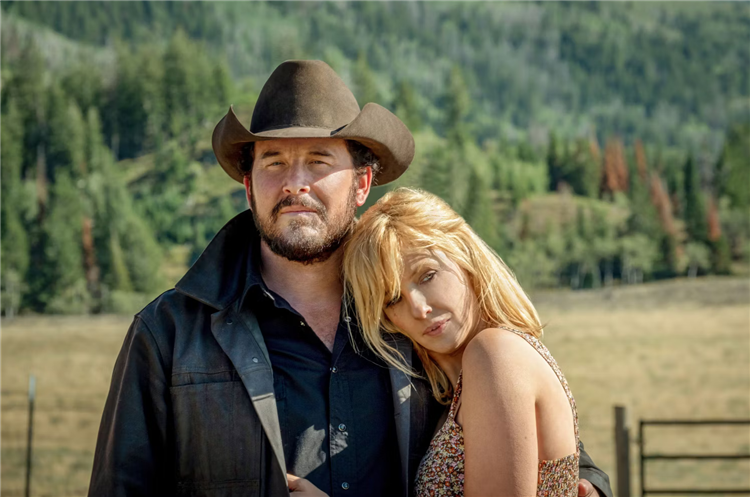
According to Greeley Hat Works, the folks behind Rip’s iconic look in the first place, just because the ranch hand wears a black hat doesn’t mean he’s a villain. “While black hats represented villains who were malicious, unethical and deceitful,” their website says. “Rip Wheeler wears a darker hat alluding to impure and unethical intentions. Rest assured, Rip Wheeler is a hero in this storyline which is what makes his character so compelling.” It’s Rip’s struggle with his own darkness that puts him in a darker hat from the get-go, and it’s why the character will never wear anything but his trademark black hat.
Other characters such as Kayce are a bit more morally ambiguous, but because of the way that he sees himself–particularly his time in the U.S. military overseas and what he’s done for his father’s empire–he almost always wears a darker shade of cowboy hat on his head. And then there’s John, who went from wearing lighter hats at the start of the series to darker ones exclusively by Season 3. Over time, John’s own self-perception has changed. While he once saw himself as the hero of his own story (including the flashbacks where Josh Lucas plays the character), he now sees himself as someone entirely morally compromised, even as he continues to fight for his family and their livelihood. This is in contrast with someone like Walker (Ryan Bingham) who is always seen with his trademark white hat (or some other lighter variation) because even though he knows the evil he can do, he still sees himself as generally good.
On the dark side of the coin, one of Yellowstone‘s greatest antagonists Malcolm Beck (Neal McDonough) blatantly sports a light hat throughout his tenure on the show’s second season. “One of the things I always try and do in all my villains is to make it that everything they do is completely justified in their own brains,” McDonough explains in a behind-the-story look at the episode “Behind Us Only Grey.” “As an actor, you can’t play it as evil, you have to play it as just a simple businessman, and I think that’s what makes Malcolm Beck so bloody chilling to watch.” Despite doing some horrendously evil things, Beck never sees himself as anything but the protagonist of his own story, which is ultimately what leads to his downfall.
Some ‘Yellowstone’ Villains Embody The Black Hat Archetype Effortlessly

Ironically, Malcolm’s brother Teal Beck (Terry Serpico) always sports a dark hat. Though we don’t get as much from Teal as we do Malcolm, it’s clear that the other Beck brother doesn’t see himself as the hero, but rather knows he’s the villain. While Malcolm rationalizes everything in his own mind, Teal does what’s necessary for their own personal gain, and he has no qualms about it. So when Kayce kills him on the toilet at the end of Season 2, it’s no wonder that this black hat dies a miserable death while his brother–who perceives himself as better than he is–is granted some additional last words.
But Teal Beck isn’t the only Yellowstone antagonist to go full dark. There are two other antagonists in particular that embody the black hat archetype perfectly, one of them being Wade Morrow (Boots Southerland). Wade is one of the primary antagonists of the third season, and he’s particularly malicious toward the Duttons and their clan. Unafraid to get his hands dirty, Wade pushes the line on more than one occasion and even sends some men to attack and nearly kill a few of the ranch hands. This ultimately results in his death in “Meaner than Evil,” an apt title for such a character.
Another Yellowstone fiend who honors the black hat tradition differently is Garret Randall (Will Patton), the biological father of Jamie Dutton (Wes Bentley) who wants revenge on John for taking his son. Randall is the one behind the massive assassination attempt on the Duttons at the end of Season 3 and was a featured character in the fourth season. Though he doesn’t start out wearing darker hats (he wears a white one in Season 3 with some black trim to foreshadow the big reveal), once he accepts what he’s done to the Duttons, sins he doesn’t care to pay for, he only wears black hats until the time of his death.
‘Yellowstone’ Asks Us the Hard Question: Who Should We Root For?
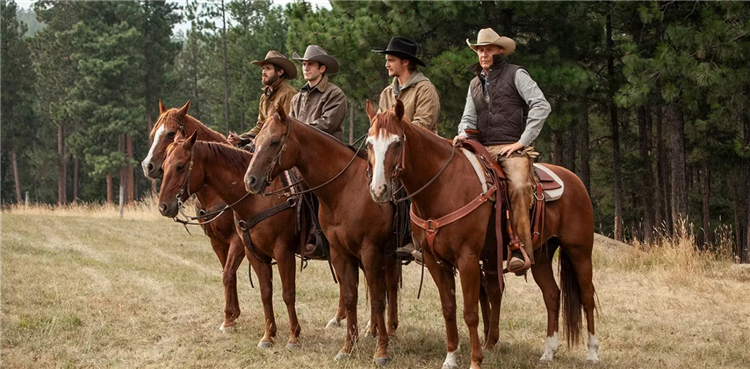
Of course, every batch of Duttons views themselves a bit differently. The Duttons seen in 1883 generally wear darker hats given the blood on their hands either from the Civil War or their great migration north, while the clan seen in 1923 exclusively wear lighter hats since they’re generally stand-up people. But by having so many characters with shifting loyalties, interpersonal turmoil, and hard left turn into evil, it makes one wonder: who on Yellowstone are you supposed to root for? Sure, not everyone is completely morally bankrupt, but most of the characters don’t fall neatly into the Western archetypes that help define the genre.
Many of Yellowstone‘s contemporaries–such as Longmire, Justified, Walker, Joe Pickett, Dark Winds, and Outer Range–feature protagonists that are, generally speaking, morally good, or who at least try to be (sometimes, Jared Padalecki‘s Cordell Walker makes some pretty questionable choices). These neo-Western heroes often sport lighter hats and live by the letter of the law. This is especially true in all of these examples minus Outer Range, which doesn’t follow a lawman and remains a little more morally ambiguous. Yet, Yellowstone and its prequels fight to remain in the grey, and while there’s certainly material there worth exploring, it can make things pretty muddy in the process.
While we wait for Yellowstone’s return, you can revisit the entire series exclusively on Peacock, or watch the greater Yellowstone Universe on Paramount+.

